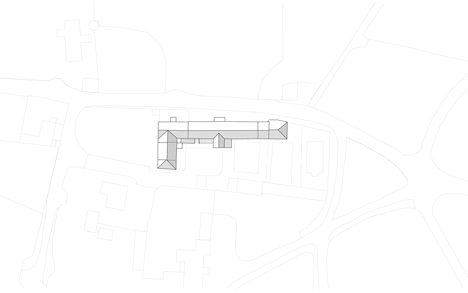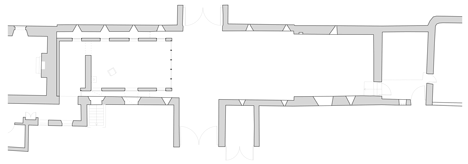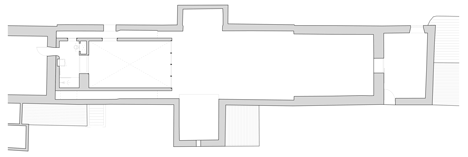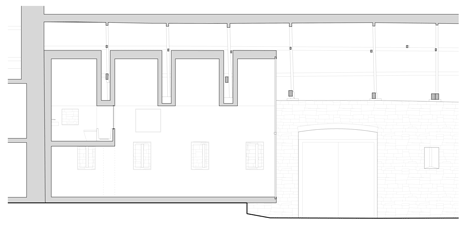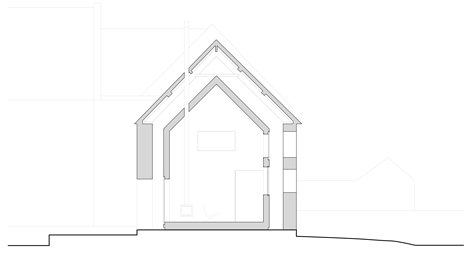Private art gallery by Stonewood Design cantilevers into a 17th-century Cotswolds barn
This glazed house-shaped gallery sits within an old barn in a English village without appearing to touch the floor, the thick stone walls or the timber-truss roof (+ slideshow).
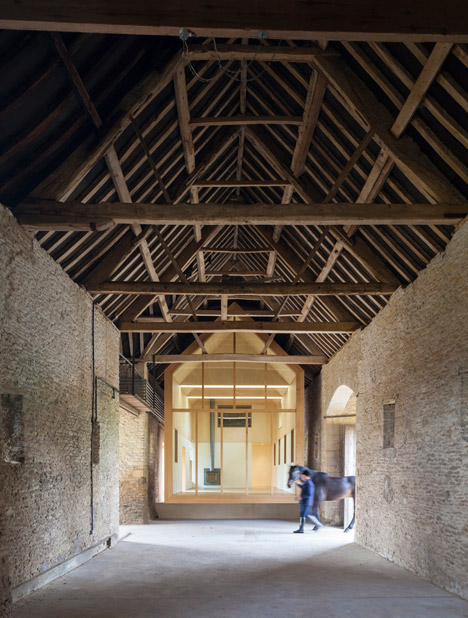
Bath-based studio Stonewood Design – which today won a RIBA Award with its design for a garden cottage – was tasked with restoring a heritage-listed barn and house, and to create a gallery for the clients' art collection.
The 17th-century buildings form part of an old farm in the Cotswolds – a rural region of southern England known for its limestone houses and picturesque scenery.
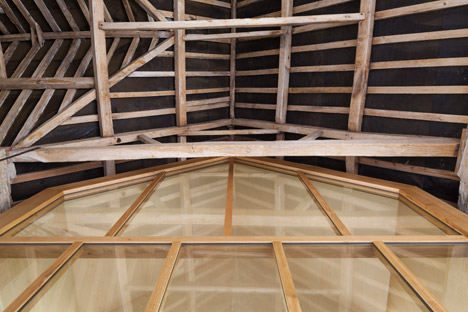
Past interventions were stripped away from the complex. This allowed the house to be extended into the barn, where the architects have created the new gallery.
The pale oak and glass construction is intended to contrast the rugged stone walls and exposed wooden trusses that characterise the old barn – and which led to the building's Grade-II heritage listing.
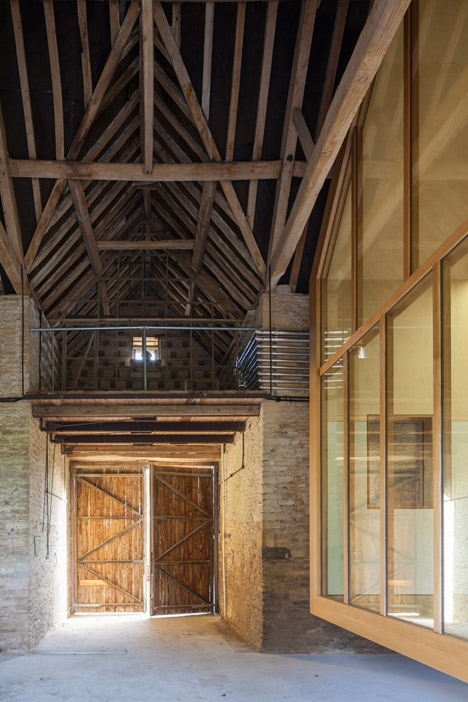
Named the Pod Gallery, the structure cantilevers from one side of the house without touching the walls, roof or floor of the barn – a detail that contented conservation officers and helped the project gain planning approval.
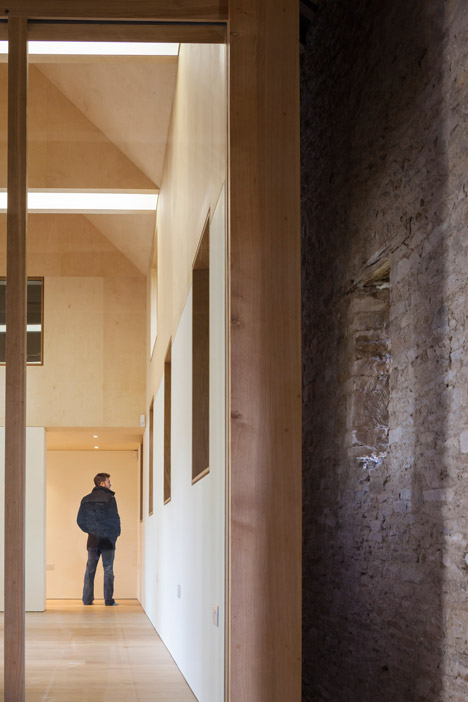
"It's almost as if the Pod Gallery was inserted as a node between the two [structures]," said studio co-founder Matt Vaudin.
"The challenge really was to have sort of wow moment where you could go into the house and then see this great barn, which is church-like internally."
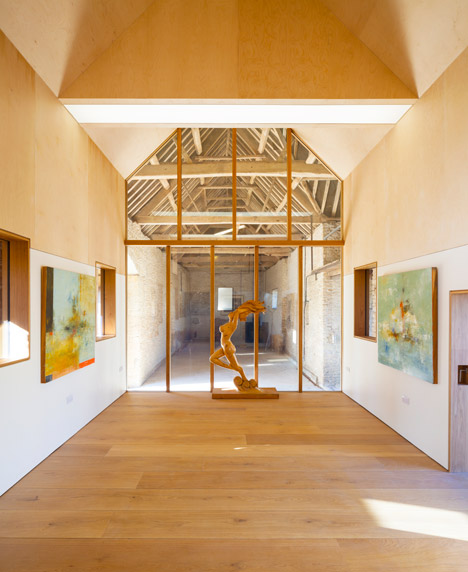
"The pod is soft timber and warm, and it's within this cold stone barn that you can see from within it," he added. "So there's a real distinction between the actual pod and the barn it's within."
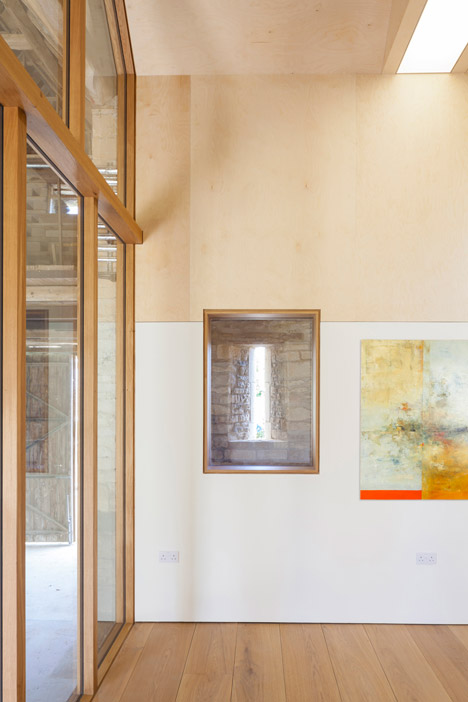
By avoiding contact with the old structure, the architects wanted to give the new volume the impression of floating, as well as ensuring that the intervention could be reversible in the future.
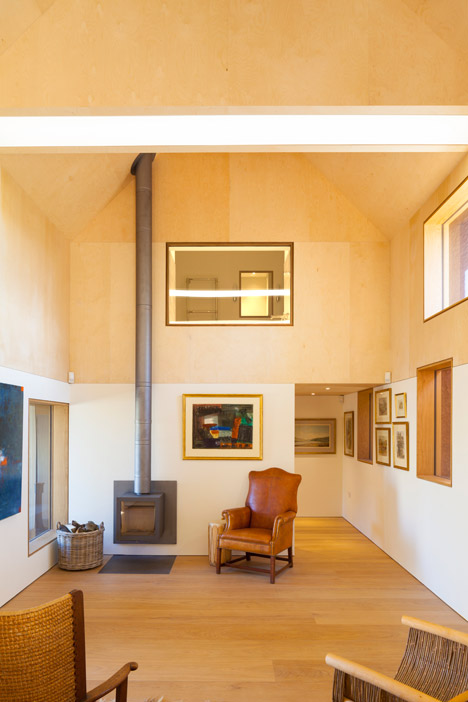
"Very much as a conservation approach we didn't want to pussyfoot around with the barn – like the saying putting lipstick on a gorilla – by plastering the barn and insulating it," Vaudin told Dezeen.
"It wouldn't have got listed building consent anyway, so that's where this concept of inserting a timber pod inside the barn was really strong."
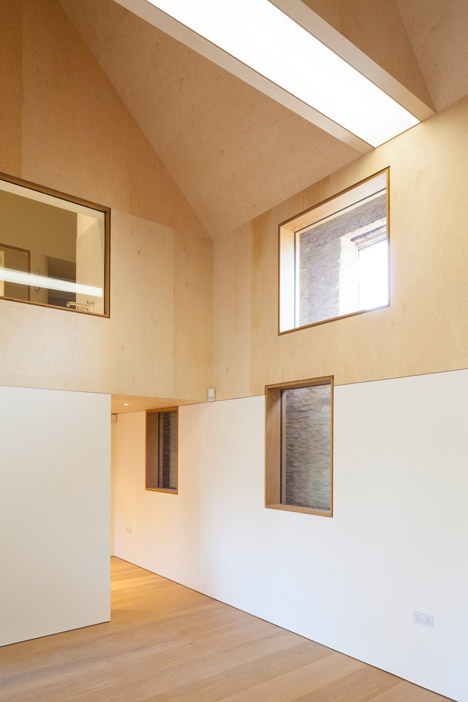
Existing doors and windows in the barn were replaced with traditional arrow-slit openings and the exterior stonework was repointed where necessary.
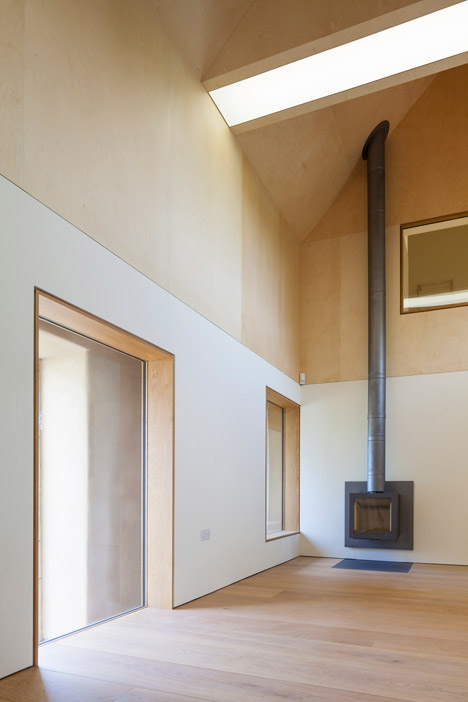
Glazed windows in the gallery are aligned with these openings, and give views both of the structure and out of it. The gable end of the house-shaped structure is glazed and faces into the dark barn.
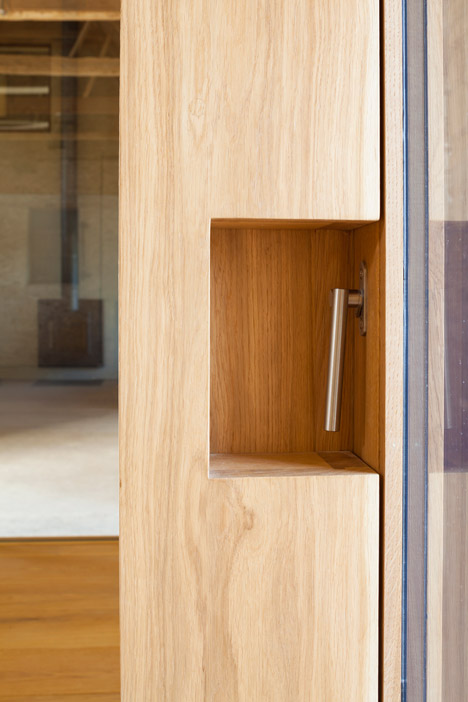
The rest of the barn will either be used to exhibit larger pieces of art – viewable from within the gallery – or as a space for the clients' horse.
"They're very keen not to mess with the barn – you don't want to domesticate or neutralise it," said the architect.
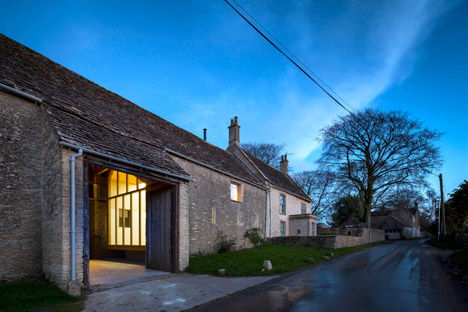
"Currently they've left it completely as is so birds can fly into it," he continued. "They're thinking about whether to display larger pieces of artwork that you view from the Pod, or letting their horse inhabit that part of the barn."
Photography is by Craig Auckland.
